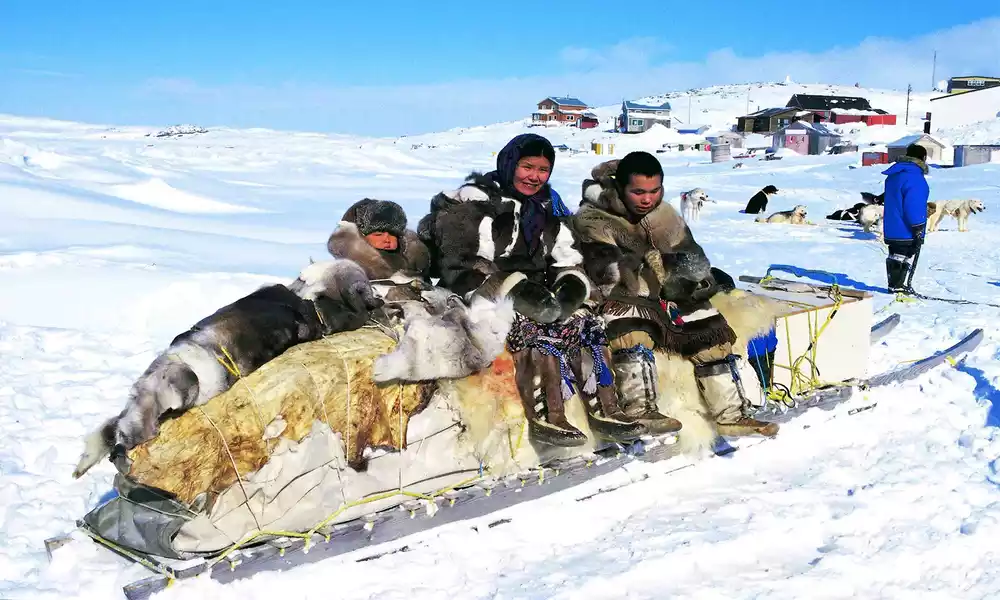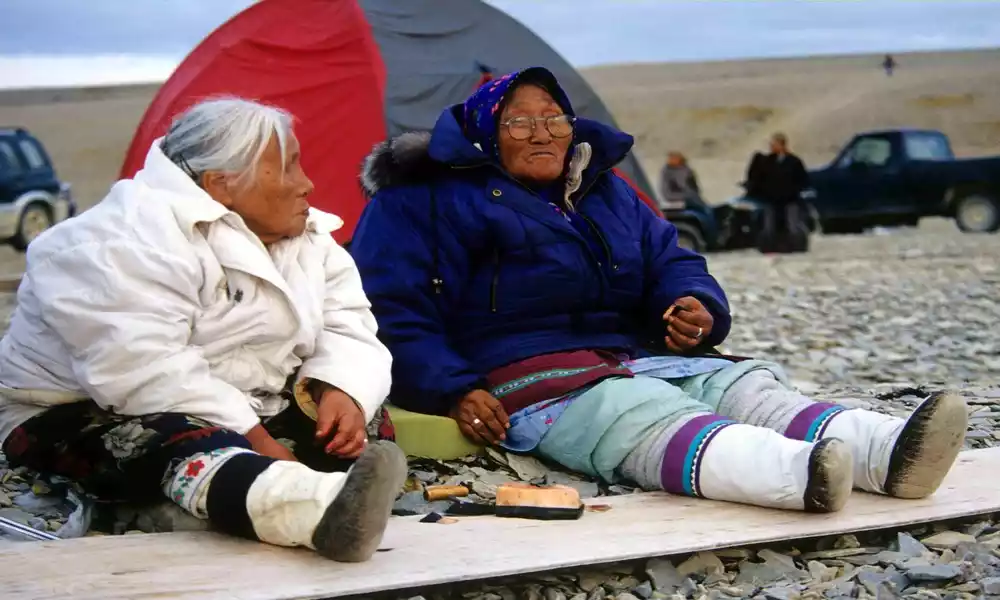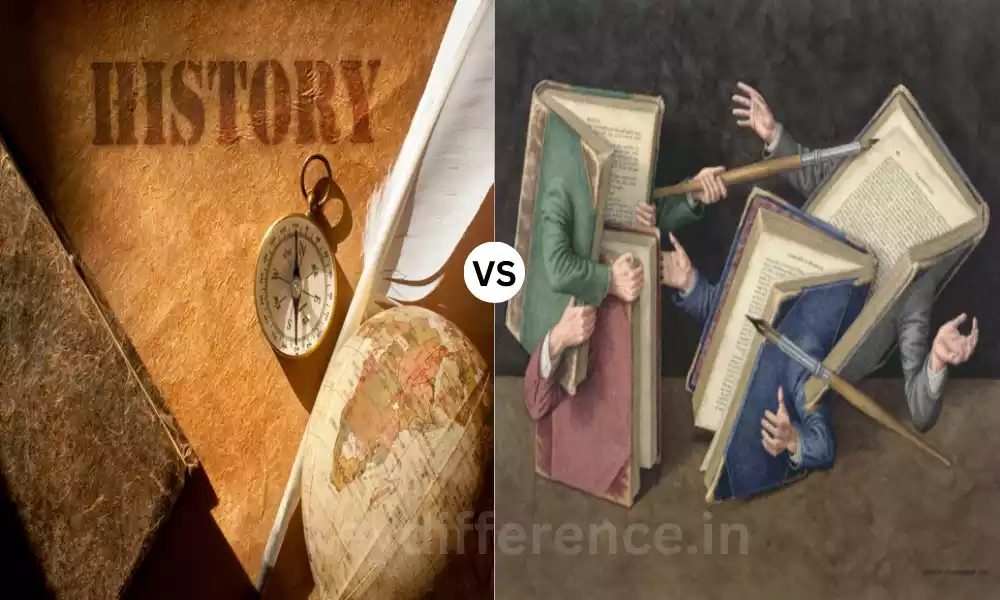Introduction
Inuit and Eskimo communities share a long history in North America and Greenland’s Arctic regions, but their differences should not be used interchangeably; to avoid any misconceptions and respect these communities’ preferences.
The difference between Eskimo and Inuit peoples, from their historical background, cultural diversity, geographic distribution, social organization activities such as economic activities education arts culture contemporary issues as well as any challenges faced by them.
By taking an in-depth look into these elements we will gain greater insight into their unique identities traditions and challenges faced by indigenous populations today.Approach this topic with cultural sensitivity and recognize their community’s role in creating their identities. This content outline seeks to provide an informative yet respectful exploration of Eskimo and Inuit identities, providing insight into their respective cultural heritages and contributions of these remarkable indigenous groups.
Definition of Eskimo
The term “Eskimo” Generally refers to indigenous people who Inhabit North America and Greenland’s Arctic regions, However the word has fallen out of use and may even be Considered derogatory by some individuals and Communities. Historically it was originally employed by non-indigenous explorers and settlers (especially European ones) as an umbrella term to broadly identify various indigenous groups residing there.
Eskimo people belong to the Eskimo-Aleut language family and can be divided into two separate linguistic groups, Inuit and Yupik. While Inuit are most often found in Canada and Greenland, Yupik reside more commonly in Alaska and Russian Far East regions.
It is critical to recognize that “Eskimo” is no longer widely used by indigenous communities to identify themselves; they prefer tribal names like Inuit or Yupik which hold cultural and historical significance for themselves and have actively advocated for use of self-identifying terms to assert cultural distinctiveness and reclaim narratives.

Definition of Inuit
Inuit are an indigenous group primarily found in Canada and Greenland who belong to the Eskimo-Aleut language family, specifically belonging to their branch. With their unique culture, identity, language and history; Inuit have earned their unique designation.”Inuit” translates to “people” or “real people” in Inuktitut, which is spoken by many Inuit communities. This term represents their deep ties to ancestral lands and shared heritage.
Inuit peoples possess an intricate culture, shaped by their environment and traditional ways of life. Historically, their subsistence consisted of hunting, fishing and gathering to rely on available resources in the Arctic environment for sustenance; as well as developing unique skills to survive harsh conditions – building igloos for shelter; using dog sleds as transport; crafting tools from animal skins into clothing items for themselves or others – such as building an Igloo.
Inuit societies are distinguished by strong communal values that emphasize cooperation, sharing and respect for nature. Traditional kinship systems and oral storytelling play key roles in transmitting cultural knowledge while keeping their history alive.
Recently, Inuit communities have been actively engaging in cultural revitalization efforts and language preservation, while asserting their rights and self-governance. Unfortunately, they also face many challenges related to environmental changes, social issues, and colonization’s effect on their communities.Notably, “Inuit” is the self-identifying term most commonly accepted and preferred by Inuit themselves, and its usage demonstrates respect for their cultural heritage and individuality.

Comparison Table of Eskimo and Inuit
Sure! Here’s a comparison table highlighting some key differences between Eskimo and Inuit:
| Aspect | Eskimo | Inuit |
|---|---|---|
| Definition | Broad term historically used to describe indigenous groups in the Arctic | Specific indigenous group inhabiting Arctic regions of Canada and Greenland |
| Language Family | Eskimo-Aleut | Eskimo-Aleut (specifically, Inuit branch) |
| Geographic Distribution | Alaska, Canada, Greenland, and the Russian Far East | Primarily Canada and Greenland |
| Self-Identification | Some individuals and communities may still use the term “Eskimo,” but it is considered outdated and derogatory by many | Inuit prefer to be referred to as Inuit, which means “the people” in the Inuktitut language |
| Cultural Practices | Customs, traditions, and subsistence practices vary among different Eskimo groups | Distinct cultural practices with a strong emphasis on cooperation, sharing, and respect for the environment |
| Political Representation | Varied political representation and governance structures across different regions | Active pursuit of self-governance, land rights, and political representation in Canada and Greenland |
| Terminology Acceptance | Some Eskimo communities prefer their specific tribal names (e.g., Inuit, Yupik) for self-identification | Inuit widely accepted and preferred term, reflecting cultural pride and distinct identity |
| Language Preservation | Some Eskimo languages face challenges in preservation and revitalization efforts | Inuit communities actively work to preserve and revitalize the Inuktitut language |
| Contemporary Issues | Face common challenges such as environmental changes, health disparities, and social issues | Advocacy for land rights, addressing climate change impacts, and cultural preservation |
Please note that this table provides a general overview and there may be regional variations and nuances within the Eskimo and Inuit communities.
It’s essential to approach the topic with cultural sensitivity and to respect the preferences and self-identifications of these indigenous groups.
Historical Background
Eskimo and Inuit peoples’ historical background includes their origins, migration patterns and interactions with European explorers and settlers as well as colonial impacts upon their communities.
A. Origins and Migration Patterns:
Eskimo and Inuit populations are believed to have originally come from Siberia via Bering Strait thousands of years ago, spreading across Arctic regions and adapting to harsh environmental conditions while developing unique cultural practices.
Eskimo-Aleut language family – which encompasses both Inuit and Eskimo peoples – evolved as communities were established and interaction occurred among neighboring groups.
B. Interaction With European Explorers and Settlers:
European exploration in the Arctic region began during the 16th century, when John Davis and Martin Frobisher first established contact with indigenous populations.
The arrival of European whalers, traders, and missionaries during the 17th and 18th centuries brought significant transformations to Eskimo and Inuit societies.
Trade networks were created, introducing not only new goods and technologies but also leading to the exploitation of natural resources and disruption of traditional subsistence patterns.
C. Colonization Impact on Eskimo and Inuit Communities:
European colonization of North America and Greenland had profound repercussions for Eskimo and Inuit communities.
Colonial settlements, fur trade outposts, mission stations and their subsequent cultural assimilation efforts led to cultural assimilation efforts as well as European systems of governance being introduced into indigenous communities.
Spread of disease, relocations under duress and conflicts with settlers all had detrimental impacts on indigenous populations.
In some instances, traditional practices were suppressed and children sent to residential schools where they were forbidden from speaking their native tongue and practicing cultural traditions.
Understanding the history and background of Eskimo and Inuit peoples helps provide context for their contemporary challenges and resilience. Colonization by European settlers continues to have lasting repercussions that affect social, cultural, and political aspects of these communities today.
Cultural and Linguistic Diversity
Eskimo and Inuit communities display rich cultural and linguistic diversity due to their distinct customs, traditions, and regional variations. This section examines their language families, traditional subsistence practices, cultural traditions, and regional variations.
A. Eskimo-Aleut and Inuit Language Families:
Eskimo and Inuit languages both belong to the Eskimo-Aleut language family, unique to Arctic regions. Within this family are Inuktitut, Yupik and Alutiiq which each possess different dialects and variations.
Inuktitut is the language most frequently spoken among Inuit and can be found across regions with many dialects spoken across its geographical expanse.
B. Subsistence Practices and Cultural Traditions:
Eskimo and Inuit communities have relied heavily on hunting, fishing and gathering activities as the means for survival. Hunting practices typically include targeting marine mammals like seals, whales and walruses as well as land mammals like caribou and polar bears for sustenance.
Fishing, foraging and trapping all play a role in providing food and resources. Cultural traditions encompass oral storytelling, music, dance, art, clothing and spiritual beliefs that are intimately tied with their environment and ancestral ties.
C. Regional Variations in Customs and Beliefs:
Eskimo and Inuit communities share some cultural practices, but there are regional variations in customs and beliefs. Factors such as geography, available resources, and historical interactions may influence such differences.
Inuit communities in Canada and Greenland possess distinctive cultural identities shaped by their histories and environments, reflecting traditional stories, art forms, clothing styles, social structures and local adaptations that express their individual identities and cultural expressions.
Understanding the cultural and linguistic diversity of Eskimo and Inuit communities offers insight into their rich heritage, while emphasizing the significance of maintaining and celebrating their distinctive cultural practices that have enabled generations of survivors in Arctic environments.
Terminology and Usage
Terminology used to refer to Eskimo and Inuit peoples has undergone considerable change over time, gaining new implications and preferences as time progressed. This section explores its origin, the emergence and use of “Inuit” self-identification, as well as cultural and political implications associated with terminology choices.
A. Origin of the term “Eskimo”:
The term “Eskimo” may have come from Algonquian language and has long been employed by non-indigenous people, specifically European explorers and settlers, to broadly refer to indigenous groups across the Arctic region. Its definition and etymology remain controversial; many indigenous communities view the term as derogatory.
B. Adoption and Use of “Inuit” as Self-Identifying Title:
“Inuit,” which translates into Inuktitut as meaning “people” or “real people,” is widely adopted and preferred as an identity term by Inuit themselves.
“Inuit” as a self-identification demonstrates cultural pride, unique identity, and the desire to take back narratives for themselves. To best support Inuit communities worldwide, it is crucial that self-identifying terms chosen by them be respected and used accordingly.
C. Cultural and political implications of terminology:
Terminology has significant cultural and political repercussions; using “Eskimo” when referring to communities may be seen as disregarding their self-defined identities and perpetuating colonial narratives.
The recent shift toward using “Inuit” acknowledges the agency of indigenous groups like these and their right to define themselves.
Respecting the preferences and decisions of indigenous communities when it comes to self-identification is a critical component of cultural understanding and respecting their sovereignty.
Eskimo and Inuit peoples find it essential that language reflect their preferences and self-identifications accurately, in order to demonstrate respect for their cultural heritage, recognize diverse identities among them and promote inclusive dialogues.
By doing this, we can demonstrate respect for their cultural legacy while honoring diverse identities while opening dialogue channels between ourselves and these indigenous groups.
Geographic Distribution
Eskimo and Inuit communities can be found across North America and Greenland. This section explores their geographic distribution as a snapshot of where these indigenous groups inhabit their territories.
Eskimo Communities: Alaska:
Eskimo communities can be found throughout Alaska, particularly in its western and northern regions. Communities comprised of Yupik Eskimos, Inupiaq Eskimos, and other smaller Eskimo groups can be found there.
Canada:
Canada is home to Eskimo Communities that span across the Arctic region, most notably Inuit Communities based in Inuvialuit in the western Arctic and Nunavut in the eastern Arctic, who serve as Prominent Eskimo groups. Greenland also Boasts Eskimo groups.
Greenland is home to a majority of Inuit natives, making up the world’s largest Eskimo community.
Inuit Communities:
Canada: Inuit communities in Canada are concentrated mainly in its northern regions, such as Nunavik in Northern Quebec, Nunatsiavut in Labrador, and Inuvialuit Settlement Region in Northwest Territories. For Greenland this population primarily lives on Greenland.
Greenland is home to an indigenous Inuit population, representing the vast majority of residents within its borders. Judetean Inuit communities reside throughout Greenland’s three main regions–western, eastern, and northern parts.
Eskimo and Inuit communities can be found throughout the Arctic environment, reflecting their adaptation to its conditions as well as historical presence in specific regions. Each has developed unique cultural features, dialects, and social structures over time that are tailored specifically to its particular environment and influences.
Eskimo and Inuit peoples should recognize and appreciate their unique geographical territories and communities for greater understanding of their cultural diversity and historical ties to ancestral lands.
Social Organization and Governance
Eskimo and Inuit communities display different social organizations and governance structures due to historical influences, cultural traditions, and contemporary developments. This section explores their social organization such as kinship systems, community governance structures and efforts towards self-governance.
Social Organization:
Eskimo and Inuit societies tend to place strong emphasis on communal values and collective decision-making processes, with extended families playing an essential role in terms of cooperation, sharing, and mutual support.
Elders hold respected positions within their community, offering wisdom, guidance, and cultural knowledge. B. Kinship Systems: Eskimo and Inuit communities often possess intricate kinship systems which define relationships and responsibilities within the group.
In many instances, they employ bilateral kinship systems that recognize both maternal and paternal relatives, as well as their extended relationships that go beyond immediate family bonds to form the basis for social networks and community cohesion. desfaso
Community Governance:
Eskimo and Inuit communities historically relied on traditional forms of governance led by community leaders or elders for decision-making processes, however due to colonial structures being implemented they often got disrupted or replaced altogether.
Recently, there has been an upsurge in community-based governance and self-determination initiatives among Eskimo and Inuit communities.
Indigenous land claims agreements, self-governing structures and co-management arrangements with governments have been put in place in order to restore autonomy and ensure cultural preservation. D. Contemporary Efforts toward Self-Governance: An Overview.
Inuit communities across Canada and Greenland have made significant advancements toward self-governance and political representation.
With the creation of Nunavut as a territory in Canada with a majority Inuit population in 1999, a major milestone was reached toward self-government for Inuit communities.
Greenland Inuit have increased their control over local governance and taken steps towards more autonomy.
These social organization and governance structures exemplify the resilience and agency of Eskimo and Inuit communities in maintaining their cultural heritage while striving for self-determination. Their efforts to reclaim traditional governance systems and participate in decision making processes contributes to cultural revitalization and empowerment among indigenous groups.
Economic Activities
Eskimo and Inuit communities have traditionally relied upon their environment and natural resources for economic activity. This section explores their traditional subsistence practices, economic adaptations, contemporary economic activities and any challenges they face with economic development.
A. Traditional Subsistence Practices:
Eskimo and Inuit communities have historically relied on hunting, fishing, and gathering as their source of sustenance. Hunting marine mammals such as seals and whales for food as well as land animals like caribou has always been an integral part of subsistence practices among Eskimo and Inuit communities.
Fishing, foraging for plants and trapping are also vital aspects of traditional Eskimo and Inuit economies.
B. Economic Adaptations:
Eskimo and Inuit communities have modified their economic activities in response to evolving circumstances, including colonization and globalization influences.
Communities across the Arctic have engaged in wage labor, the cash economy, and roles such as mining, construction and government services. Furthermore, some communities have established tourism initiatives that highlight their culture, traditional practices and Arctic environment.
C. Current Economic Activities:
Eskimo and Inuit communities have recently engaged in various economic activities, both traditional and modern. Art and crafts such as sculptures, carvings and traditional clothing provide sources of income while simultaneously serving as cultural expression.
Small-scale entrepreneurship, such as the founding of local businesses and enterprises, plays an essential part in economic development within its respective communities.
Natural resource management and participation in industries related to fishing and mining play an integral part of Eskimo and Inuit communities’ economies.
D. Economic Challenges:
Eskimo and Inuit communities often face unique economic development obstacles, including limited market access, geographic isolation and climate change impacts.
Environmental changes such as melting sea ice and declining wildlife populations may alter traditional subsistence practices and livelihoods of populations living along coastlines.
Economic disparities, high costs of living and limited employment opportunities continue to present serious obstacles to sustainable economic development.
Eskimo and Inuit communities are actively taking steps to address their economic insufficiencies and foster sustainable development through initiatives, resource management, collaboration with governments and organizations, innovative initiatives, resource preservation strategies and innovative initiatives – in an attempt to find a balance between economic progress and maintaining cultural heritage and ecological integrity.
Education and Language Preservation
Education and language preservation play vital roles in maintaining cultural continuity and empowerment within Eskimo and Inuit communities. This section highlights their significance, challenges faced in education systems and efforts undertaken to maintain and revitalize native tongues.
A. Importance of Education:
Education is fundamental for Eskimo and Inuit individuals and communities’ welfare and future opportunities, providing access to knowledge, skills, and resources that contribute to economic development, cultural preservation, and self-determination.
B. Challenges within Education Systems:
Eskimo and Inuit communities face unique educational obstacles due to factors like remote locations, language barriers and cultural biases in mainstream education. Geographic isolation may limit access to quality educational resources and facilities.
Language barriers and non-indigenous languages’ dominance in education can obstruct cultural identity and traditional knowledge transfer.
C. Language Preservation Initiatives: Language revitalization efforts are vital in protecting cultural identity and transmitting knowledge across generations. Eskimo and Inuit communities actively take steps to preserve and revitalize their native tongues such as Inuktitut and Yupik for future generations to learn from them.
Initiatives include language immersion programs, nests, community language classes and the development of language resources and materials. Educational institutions, governments and community organizations support these efforts.
D. Culturally Relevant Education:
Culturally relevant education acknowledges and incorporates indigenous knowledge, languages, and cultural practices into its curriculum. This approach helps foster Eskimo and Inuit student pride and foster an enhanced sense of identity as part of an Eskimo/Inuit student’s sense of self. Integrating traditional teachings, storytelling, land-based learning and community involvement into education programs creates a comprehensive approach to education.
Eskimo and Inuit communities prioritize culturally relevant education and language preservation to empower future generations, preserve cultural heritage, and strengthen collective identity. Their efforts contribute to overall well-being and resilience for their indigenous communities facing contemporary challenges and changing cultural trends.
Contemporary Issues and Challenges
Eskimo and Inuit communities face various contemporary issues and challenges that affect their social, cultural, economic, and environmental well-being. This section highlights some of the key obstacles these communities are currently confronted with in today’s society.
Climate Change and Environmental Effects:
Climate change poses serious threats to the Arctic region, endangering traditional livelihoods and ecosystems relied upon by Eskimo and Inuit communities.
Melting sea ice, shifting weather patterns, and changes to wildlife habitats all threaten hunting, fishing and gathering practices, leading to food insecurity as well as cultural practices deeply connected to land and sea environments.
Health and Well-Being: Eskimo and Inuit communities face unique health concerns, including high rates of chronic diseases, mental health problems, substance abuse issues and suicide. Historical trauma, social and economic disparities, limited access to healthcare services and cultural disconnection all play a part in creating health disparities.
Economic Disparities and Employment:
Economic disparities persist within Eskimo and Inuit communities, with limited employment options and high costs of living. Geographic isolation, lack of infrastructure and limited market access limit economic development and job creation efforts.
Language and Cultural Preservation:
The loss of native languages and cultural practices remains a grave threat.hesitates The dominance of non-indigenous languages, limited resources available for language preservation efforts and intergenerational transmission gaps all pose formidable obstacles to cultural continuity and continuity.
Self-Determination and Governance:
Eskimo and Inuit communities face an ongoing struggle for greater autonomy in governance.
Work undertaken collaboratively between governments and institutions is designed to address historical injustices, establish self-governing structures, and ensure meaningful participation in decision making processes.
Youth Empowerment and Education:
Engaging and empowering youth are paramount for the long-term health and resilience of Eskimo and Inuit communities. Access to quality education with culturally sensitive curricula as well as opportunities for skills development and employment are essential to building the next generation’s wellbeing and resilience.
Resolving these contemporary issues and challenges requires a holistic and collaborative effort, and engaging Eskimo and Inuit communities in these efforts is crucial to their future sustainability and prosperity.Empowering Eskimo and Inuit communities to face these issues head-on is key in supporting self-determination, cultural preservation, economic development, and environmental stewardship to create successful futures.
Conclusion
Eskimo and Inuit peoples possess rich cultures that have flourished for centuries since first inhabiting Arctic regions. Through this content outline, we explored various aspects that define Eskimo and Inuit communities: their historical roots, cultural and linguistic diversity, terminology use, geographic distribution, social organization governance economic activities language preservation as well as contemporary issues they face.







